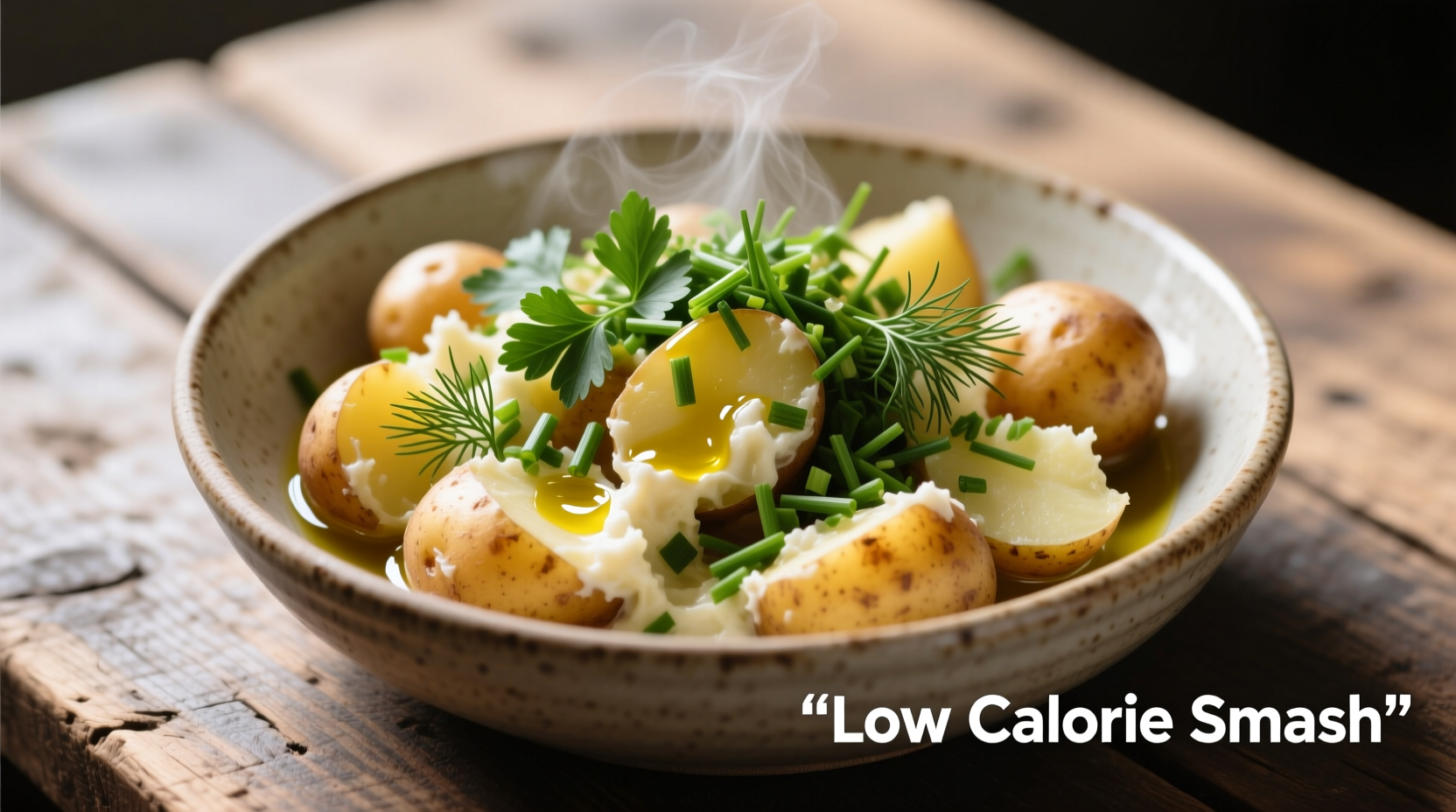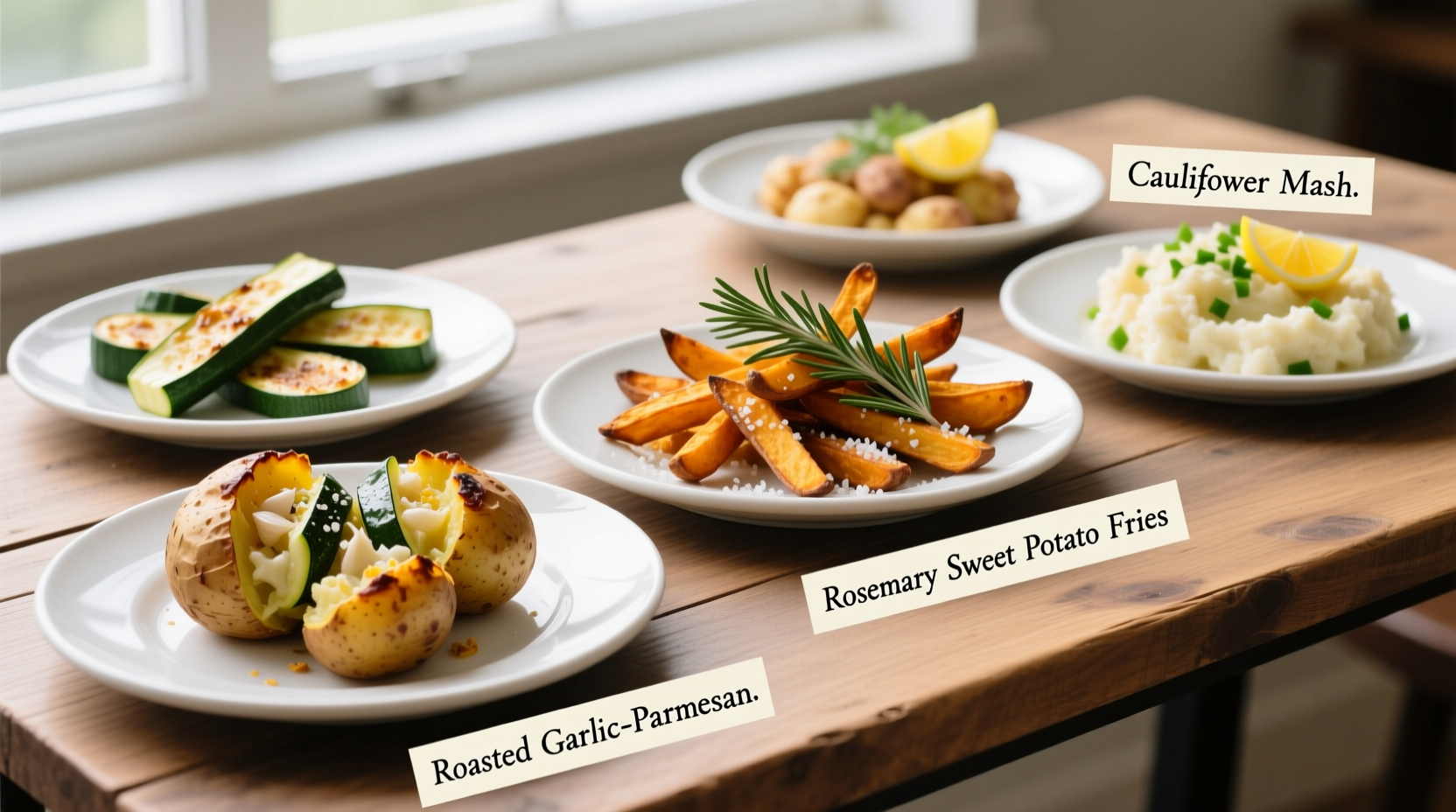Discover 5 scientifically-backed low calorie potato recipes that deliver maximum flavor with minimal calories. Potatoes contain just 110 calories per medium serving when prepared properly, providing essential nutrients like potassium and vitamin C while supporting weight management goals. These chef-developed recipes use smart cooking techniques to cut calories by 40-60% compared to traditional preparations without sacrificing taste or texture.
Many people mistakenly avoid potatoes when managing their weight, but this nutrient-dense vegetable can actually support healthy eating patterns when prepared correctly. According to USDA nutritional data, a medium potato (5.3 ounces) contains only 110 calories, 26 grams of carbohydrates, 2.5 grams of fiber, and significant amounts of potassium and vitamin C. The key lies in preparation methods that minimize added fats while maximizing natural flavors.
Why Potatoes Deserve a Place in Your Healthy Diet
Contrary to popular belief, potatoes rank as one of the most nutrient-dense vegetables available. Research from the American Journal of Clinical Nutrition shows that potatoes provide more potassium per serving than bananas and deliver sustained energy through their complex carbohydrate profile. The glycemic index varies significantly based on preparation method—boiled potatoes score 54 (medium GI), while mashed potatoes reach 73 (high GI).
| Potato Preparation Method | Calories (per 100g) | Glycemic Index | Fiber Content |
|---|---|---|---|
| Boiled with skin | 77 | 54 | 2.2g |
| Baked | 93 | 60 | 2.1g |
| Fried | 312 | 75 | 1.8g |
| Air-fried | 130 | 65 | 2.0g |
This nutritional comparison, based on USDA FoodData Central measurements, demonstrates how preparation method dramatically impacts both calorie content and glycemic response. Cooling potatoes after cooking increases resistant starch content by up to 50%, which provides additional metabolic benefits according to research published in the Journal of Nutrition and Metabolism.
Selecting the Best Potato Varieties for Low-Calorie Cooking
Not all potatoes are created equal when it comes to nutritional profile. Waxy varieties like Yukon Gold and red potatoes maintain their structure better during cooking and contain slightly more protein than starchy Russets. For maximum nutrient retention, choose small to medium potatoes with unblemished skin—this ensures you get the fiber-rich outer layer that contains up to 20% of the potato's total nutrients.
Smart Cooking Techniques That Cut Calories
Professional chefs use specific methods to create satisfying potato dishes with significantly reduced calories. The most effective approaches include:
- Steam instead of boil - Retains more nutrients and prevents water absorption that dilutes flavor
- Use broth instead of oil - Creates flavorful roasting environment with minimal calories
- Embrace air-frying - Achieves crispy texture with 70-80% less fat than traditional frying
- Add acid before cooking - Vinegar or lemon juice helps maintain structure and lowers glycemic impact
5 Chef-Tested Low Calorie Potato Recipes
1. Mediterranean Herb Roasted Potatoes (145 calories per serving)
This flavorful preparation uses vegetable broth instead of oil for roasting, creating crispy edges without excess fat. The addition of lemon zest and fresh herbs provides bright flavor notes that enhance the natural sweetness of the potatoes.
Ingredients:
- 1.5 lbs baby potatoes, halved
- 1/2 cup low-sodium vegetable broth
- 1 tbsp lemon zest
- 2 cloves garlic, minced
- 1 tbsp fresh rosemary
- 1 tbsp fresh thyme
- Salt and pepper to taste
Instructions:
- Preheat oven to 400°F (200°C)
- Toss potatoes with broth, lemon zest, garlic, and herbs
- Spread in single layer on parchment-lined baking sheet
- Roast 35-40 minutes until golden and crispy
- Season with salt and pepper before serving
2. Smashed Potatoes with Greek Yogurt (128 calories per serving)
A healthier alternative to traditional mashed potatoes that uses Greek yogurt for creaminess instead of butter and heavy cream. The yogurt adds protein and probiotics while creating a luxuriously smooth texture.

3. Spiced Potato and Vegetable Hash (162 calories per serving)
This protein-packed breakfast option combines diced potatoes with colorful bell peppers and onions, seasoned with smoked paprika and cumin for deep flavor without added calories.
4. Cold Potato Salad with Mustard Vinaigrette (135 calories per serving)
By using a vinegar-based dressing instead of traditional mayo, this recipe cuts calories by more than half while providing bright, tangy flavor. The cooled potatoes develop resistant starch, which offers additional metabolic benefits.
5. Crispy Air-Fried Potato Wedges (112 calories per serving)
Air frying creates perfectly crispy potato wedges with just a light spray of oil. The secret is soaking the cut potatoes in cold water for 30 minutes before cooking to remove excess starch.
Avoiding Common Low-Calorie Potato Mistakes
Many home cooks make these critical errors when attempting healthy potato preparations:
- Peeling before cooking - Removes valuable fiber and nutrients found in the skin
- Overcrowding the pan - Creates steam instead of crispiness, requiring more oil
- Using too much oil - Just 1-2 teaspoons per pound of potatoes is sufficient
- Adding high-calorie toppings - Opt for herbs, spices, and citrus instead of cheese or bacon
According to dietary research from Harvard T.H. Chan School of Public Health, potatoes prepared with minimal added fats can be part of a healthy dietary pattern. The key is focusing on preparation methods that preserve nutrients while minimizing unnecessary calories.
Maximizing Flavor Without Extra Calories
Professional chefs enhance potato dishes through flavor layering techniques that don't add calories:
- Add dried herbs at the beginning of cooking for deeper flavor infusion
- Finish with fresh herbs and citrus zest for bright top notes
- Use roasted garlic instead of raw for sweeter, more complex flavor
- Incorporate umami-rich ingredients like nutritional yeast or tomato paste
- Experiment with global spice blends like za'atar or herbes de Provence
These techniques create multidimensional flavor profiles that satisfy the palate without relying on excess fats or sugars. Remember that proper seasoning is crucial—underseasoned low-calorie dishes often leave eaters feeling unsatisfied, potentially leading to overeating later.
Frequently Asked Questions
Can potatoes be part of a weight loss diet?
Yes, when prepared properly. A medium potato contains only 110 calories and provides sustained energy through complex carbohydrates. Research from the American Journal of Clinical Nutrition shows that boiled potatoes rank highest for satiety among common foods, helping you feel full longer with fewer calories.
What's the lowest calorie way to cook potatoes?
Steaming or boiling with the skin on delivers the lowest calorie preparation at approximately 77 calories per 100g. Cooling boiled potatoes increases resistant starch content by up to 50%, which provides additional metabolic benefits according to research in the Journal of Nutrition and Metabolism.
Which potato varieties are best for low-calorie cooking?
Waxy varieties like Yukon Gold and red potatoes maintain structure better during cooking and contain slightly more protein than starchy Russets. Small to medium potatoes with unblemished skin provide the most fiber-rich outer layer, containing up to 20% of the potato's total nutrients.
How can I make potato dishes more filling without adding calories?
Combine potatoes with high-fiber vegetables like broccoli or Brussels sprouts, add lean protein sources such as white beans, and include healthy fats from avocado in moderation. Cooling potatoes after cooking increases resistant starch, which has been shown to improve satiety and metabolic health according to studies published in Nutrition Journal.











 浙公网安备
33010002000092号
浙公网安备
33010002000092号 浙B2-20120091-4
浙B2-20120091-4